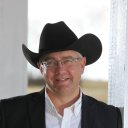

Camelina/Ethiopian Mustard Breeding
Friday, July 24, 2020 4:00 PM to 4:30 PM · 30 min. (Africa/Abidjan)
Knowledge Centre
Living Labs
Information
Novel germplasm and varieties of the new oilseed crops camelina and carinata are being developed at AAFC in Saskatoon and licensed to industry partners. Join presenters Christina Eynck, Vicky Roslinsky, Kevin Falk and Isobel Parkin to learn more about both. Camelina can be grown profitably on land where other oilseeds perform poorly, providing a much needed rotation option. Initially emerging as an industrial oilseed, the market focus in Canada has recently shifted to food and feed applications. This is due to the high content of omega-3 fatty acids in camelina seed oil, the high stability, and recent trial results demonstrating the suitability of camelina oil and meal in feed applications. Presenters will discuss progress made recently to develop varieties with increased seed size and to develop true winter camelina varieties, which combine environmental and economic benefits with an increase in the quality of the oil for food and feed applications. Carinata, a high-erucic oilseed, has recently been developed as an industrial crop for biofuel production and has the potential to be a dedicated feedstock crop for additional bio‐based products. Also known as Ethiopian mustard, it is drought and heat tolerant and shatter resistant, but mostly also late maturing. Work at AAFC-SRDC is focusing on developing high-yielding, early maturing varieties, improving oil and meal traits through interspecific hybridization, and developing hybrids. The identification of genomic regions associated with agronomically important traits will be presented, which is also relevant to canola and condiment mustard breeding due to shared genetics.


